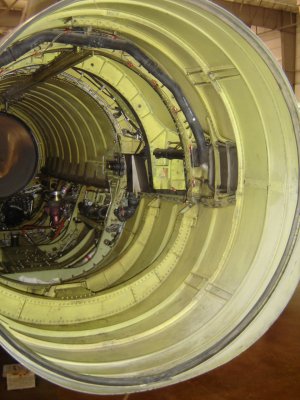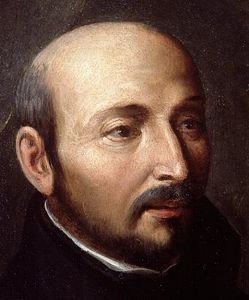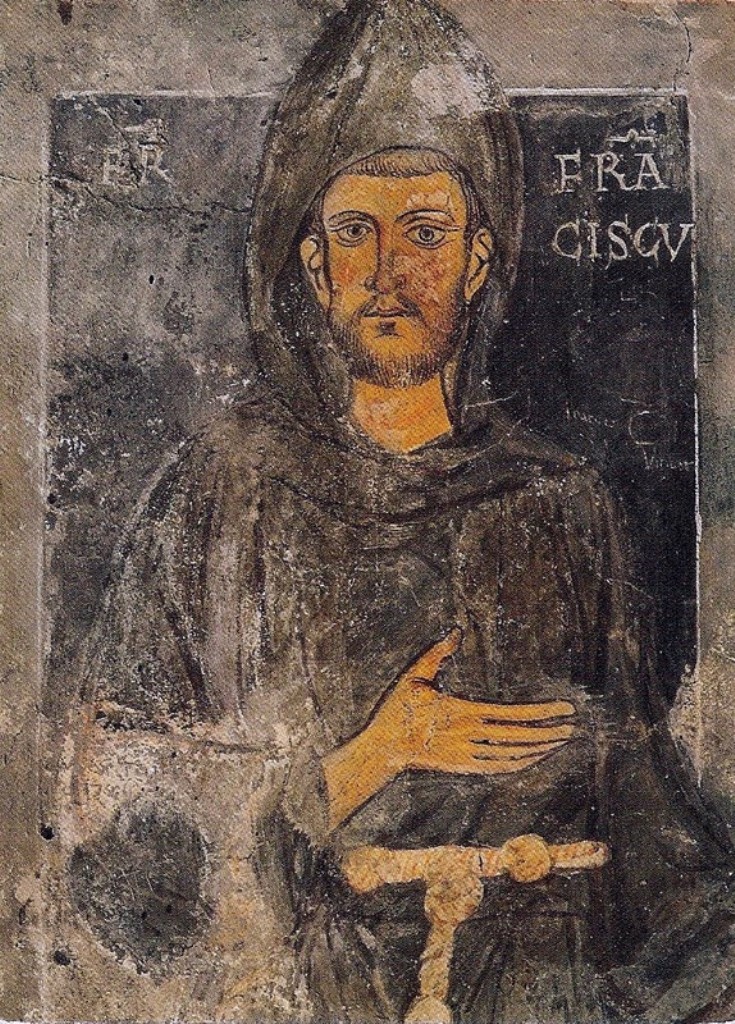|
Jesuit Block And Estancias Of Córdoba
The Jesuit Block and Estancias of Córdoba ( es, Manzana Jesuítica y Estancias de Córdoba) are a former Jesuit reduction built by missionaries in the province of Córdoba, Argentina, named a World Heritage Site in 2000. The ''Manzana Jesuítica'' contains the University of Córdoba, one of the oldest in South America, the Monserrat Secondary School, a church, and residence buildings. To maintain such a project, the Jesuits operated six ''Estancias'' (residences) around the province of Córdoba, named Caroya, Jesús María, Santa Catalina, Alta Gracia, Candelaria, and San Ignacio. The farm and the complex, started in 1615, had to be left by the Jesuits, following the 1767 decree by King Charles III of Spain that expelled them from the continent.Manfred Barthel. ''The Jesuits: History and Legend of the Society of Jesus''. Translated and adapted from the German by Mark Howson. William Morrow & Co., 1984, pp. 223-4. They were then run by the Franciscans until 1853, when the ... [...More Info...] [...Related Items...] OR: [Wikipedia] [Google] [Baidu] |
Córdoba Province, Argentina
Córdoba () is a province of Argentina, located in the center of the country. Its neighboring provinces are (clockwise from the north) Santiago del Estero, Santa Fe, Buenos Aires, La Pampa, San Luis, La Rioja, and Catamarca. Together with Santa Fe and Entre Ríos, the province is part of the economic and political association known as the Center Region. Córdoba is the second-most populous Argentine province, with 3,308,876 inhabitants,Proyecciones y estimaciones de población 2001-2015 - INDEC - Pág 16. and the fifth by size, at about . Almost 41% of its inhabitants reside in the capital city, Córdoba, and its surroundings, making it ... [...More Info...] [...Related Items...] OR: [Wikipedia] [Google] [Baidu] |
Suppression Of The Jesuits
The suppression of the Jesuits was the removal of all members of the Society of Jesus from most of the countries of Western Europe and their colonies beginning in 1759, and the abolishment of the order by the Holy See in 1773. The Jesuits were serially expelled from the Portuguese Empire (1759), France (1764), the Two Sicilies, Malta, Parma, the Spanish Empire (1767) and Austria, and Hungary (1782). This timeline was influenced by political manoeuvrings both in Rome and within each country involved. The papacy reluctantly acceded to the anti-Jesuit demands of various Catholic kingdoms while providing minimal theological justification for the suppressions. Historians identify multiple factors causing the suppression. The Jesuits, who were not above getting involved in politics, were distrusted for their closeness to the pope and his power in the religious and political affairs of independent nations. In France, it was a combination of many influences, from Jansenism ... [...More Info...] [...Related Items...] OR: [Wikipedia] [Google] [Baidu] |
Former Populated Places In Argentina
A former is an object, such as a template, gauge or cutting die, which is used to form something such as a boat's hull. Typically, a former gives shape to a structure that may have complex curvature. A former may become an integral part of the finished structure, as in an aircraft fuselage, or it may be removable, being using in the construction process and then discarded or re-used. Aircraft formers Formers are used in the construction of aircraft fuselage, of which a typical fuselage has a series from the nose to the empennage, typically perpendicular to the longitudinal axis of the aircraft. The primary purpose of formers is to establish the shape of the fuselage and reduce the column length of stringers to prevent instability. Formers are typically attached to longerons, which support the skin of the aircraft. The "former-and-longeron" technique (also called stations and stringers) was adopted from boat construction, and was typical of light aircraft built until the a ... [...More Info...] [...Related Items...] OR: [Wikipedia] [Google] [Baidu] |
Spanish Missions In Argentina
Spanish might refer to: * Items from or related to Spain: **Spaniards are a nation and ethnic group indigenous to Spain ** Spanish language, spoken in Spain and many Latin American countries ** Spanish cuisine Other places * Spanish, Ontario, Canada * Spanish River (other), the name of several rivers * Spanish Town, Jamaica Other uses * John J. Spanish (1922–2019), American politician * "Spanish" (song), a single by Craig David, 2003 See also * * * Español (other) * Spain (other) * España (other) * Espanola (other) * Hispania, the Roman and Greek name for the Iberian Peninsula * Hispanic, the people, nations, and cultures that have a historical link to Spain * Hispanic (other) * Hispanism * Spain (other) * National and regional identity in Spain * Culture of Spain The culture of ''Spain'' is based on a variety of historical influences, primarily based on the culture of ancient Rome, Spain being a prom ... [...More Info...] [...Related Items...] OR: [Wikipedia] [Google] [Baidu] |
Jesuit History In South America
, image = Ihs-logo.svg , image_size = 175px , caption = ChristogramOfficial seal of the Jesuits , abbreviation = SJ , nickname = Jesuits , formation = , founders = , founding_location = , type = Order of clerics regular of pontifical right (for men) , headquarters = Generalate:Borgo S. Spirito 4, 00195 Roma-Prati, Italy , coords = , region_served = Worldwide , num_members = 14,839 members (includes 10,721 priests) as of 2020 , leader_title = Motto , leader_name = la, Ad Majorem Dei GloriamEnglish: ''For the Greater Glory of God'' , leader_title2 = Superior General , leader_name2 = Fr. Arturo Sosa, SJ , leader_title3 = Patron saints , leader_name3 = , leader_title4 = Ministry , leader_name4 = Missionary, educational, literary works , main_organ = La Civiltà Cattolica ... [...More Info...] [...Related Items...] OR: [Wikipedia] [Google] [Baidu] |
Buildings And Structures In Córdoba Province, Argentina
A building, or edifice, is an enclosed structure with a roof and walls standing more or less permanently in one place, such as a house or factory (although there's also portable buildings). Buildings come in a variety of sizes, shapes, and functions, and have been adapted throughout history for a wide number of factors, from building materials available, to weather conditions, land prices, ground conditions, specific uses, prestige, and aesthetic reasons. To better understand the term ''building'' compare the list of nonbuilding structures. Buildings serve several societal needs – primarily as shelter from weather, security, living space, privacy, to store belongings, and to comfortably live and work. A building as a shelter represents a physical division of the human habitat (a place of comfort and safety) and the ''outside'' (a place that at times may be harsh and harmful). Ever since the first cave paintings, buildings have also become objects or canvasses of much artist ... [...More Info...] [...Related Items...] OR: [Wikipedia] [Google] [Baidu] |
World Heritage Sites In Argentina
The United Nations Educational, Scientific and Cultural Organization (UNESCO) World Heritage Sites are the places of important cultural or natural heritage as described in the UNESCO World Heritage Convention, established in 1972. Argentina accepted the UNESCO World Heritage Convention on 23 August 1978, making its historical sites eligible for inclusion on the list. Argentina had its first site included on the list at the 5th session of World Heritage Committee, held in Sydney, Australia, in October 1981. At that session, "Los Glaciares National Park" was inscribed on the list. , 3 elements have been inscribed on the Intangible cultural heritage and 11 sites have been inscribed on the World Heritage List: 6 cultural sites and 5 natural sites. A further 10 sites have been proposed for inscription and are on the tentative list. World Heritage Sites :Name: as listed by the World Heritage Committee :Location: Province where the site is located. If the site is a trans-border s ... [...More Info...] [...Related Items...] OR: [Wikipedia] [Google] [Baidu] |
Buildings And Structures Completed In The 17th Century
A building, or edifice, is an enclosed structure with a roof and walls standing more or less permanently in one place, such as a house or factory (although there's also portable buildings). Buildings come in a variety of sizes, shapes, and functions, and have been adapted throughout history for a wide number of factors, from building materials available, to weather conditions, land prices, ground conditions, specific uses, prestige, and aesthetic reasons. To better understand the term ''building'' compare the list of nonbuilding structures. Buildings serve several societal needs – primarily as shelter from weather, security, living space, privacy, to store belongings, and to comfortably live and work. A building as a shelter represents a physical division of the human habitat (a place of comfort and safety) and the ''outside'' (a place that at times may be harsh and harmful). Ever since the first cave paintings, buildings have also become objects or canvasses of much ar ... [...More Info...] [...Related Items...] OR: [Wikipedia] [Google] [Baidu] |
List Of Jesuit Sites
This list includes past and present buildings, facilities and institutions associated with the Society of Jesus. In each country, sites are listed in chronological order of start of Jesuit association. Nearly all these sites have been managed or maintained by Jesuits at some point of time since the Society's founding in the 16th century, with indication of the relevant period in parentheses; the few exceptions are sites associated with particularly significant episodes of Jesuit history, such as the Martyrium of Saint Denis, Montmartre, Martyrium of Saint Denis in Paris, site of the original Jesuit vow on . The Jesuits have built many new colleges and churches over the centuries, for which the start date indicated is generally the start of the project (e.g. invitation or grant from a local ruler) rather than the opening of the institution which often happened several years later. The Jesuits also occasionally took over a pre-existing institution and/or building, for ex ... [...More Info...] [...Related Items...] OR: [Wikipedia] [Google] [Baidu] |
Pope Francis
Pope Francis ( la, Franciscus; it, Francesco; es, link=, Francisco; born Jorge Mario Bergoglio, 17 December 1936) is the head of the Catholic Church. He has been the bishop of Rome and sovereign of the Vatican City State since 13 March 2013. Francis is the first pope to be a member of the Society of Jesus, the first from the Americas, the first from the Southern Hemisphere, and the first pope from outside Europe since Pope Gregory III, Gregory III, a Syrian who reigned in the 8th century. Born in Buenos Aires, Argentina, Bergoglio worked for a time as a Bouncer (doorman), bouncer and a janitor as a young man before training to be a chemist and working as a technician in a food science laboratory. After recovering from a severe illness, he was inspired to join the Jesuits, Society of Jesus (Jesuits) in 1958. He was ordained a Catholic priest in 1969, and from 1973 to 1979 was the Jesuit provincial superior in Argentina. He became the archbishop of Buenos Aires in 1998 and was ... [...More Info...] [...Related Items...] OR: [Wikipedia] [Google] [Baidu] |
The Americas
The Americas, which are sometimes collectively called America, are a landmass comprising the totality of North and South America. The Americas make up most of the land in Earth's Western Hemisphere and comprise the New World. Along with their associated islands, the Americas cover 8% of Earth's total surface area and 28.4% of its land area. The topography is dominated by the American Cordillera, a long chain of mountains that runs the length of the west coast. The flatter eastern side of the Americas is dominated by large river basins, such as the Amazon, St. Lawrence River–Great Lakes basin, Mississippi, and La Plata. Since the Americas extend from north to south, the climate and ecology vary widely, from the arctic tundra of Northern Canada, Greenland, and Alaska, to the tropical rain forests in Central America and South America. Humans first settled the Americas from Asia between 42,000 and 17,000 years ago. A second migration of Na-Dene speakers followed later fro ... [...More Info...] [...Related Items...] OR: [Wikipedia] [Google] [Baidu] |
Franciscan
, image = FrancescoCoA PioM.svg , image_size = 200px , caption = A cross, Christ's arm and Saint Francis's arm, a universal symbol of the Franciscans , abbreviation = OFM , predecessor = , merged = , formation = , founder = Francis of Assisi , founding_location = , extinction = , merger = , type = Mendicant Order of Pontifical Right for men , status = , purpose = , headquarters = Via S. Maria Mediatrice 25, 00165 Rome, Italy , location = , coords = , region = , services = , membership = 12,476 members (8,512 priests) as of 2020 , language = , sec_gen = , leader_title = Motto , leader_name = ''Pax et bonum'' ''Peace and llgood'' , leader_title2 = Minister General , leader_name2 = ... [...More Info...] [...Related Items...] OR: [Wikipedia] [Google] [Baidu] |

.png)





